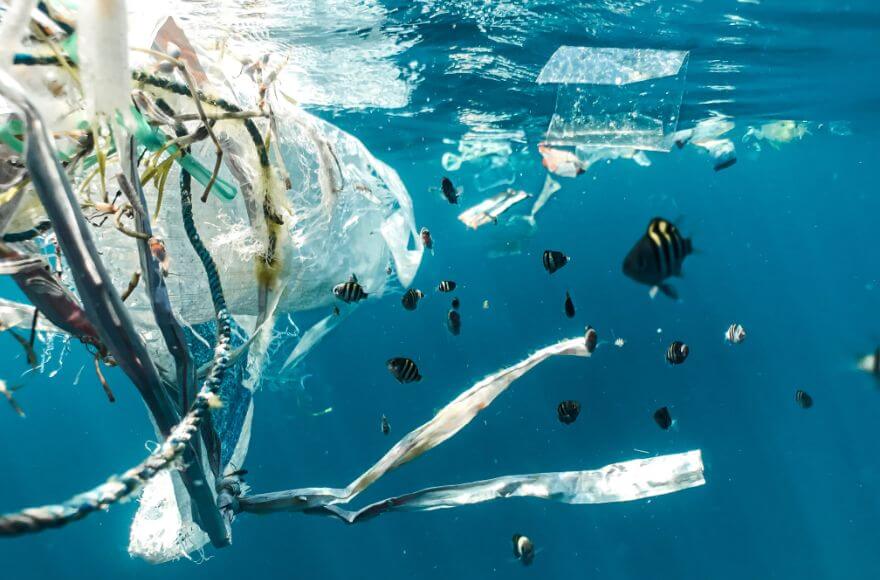Your Cart is Empty
INFO

You Don’t Have To Do It All In Plastic Free July
July 01, 2022 5 min read
What Is Plastic Free July?
A global movement called Plastic Free July encourages millions of people to take action against plastic pollution so that our streets, oceans, and communities will be cleaner and safer.
Getting people active and thinking about what they buy is a great approach to reduce the amount of plastic they use on a daily basis and, perhaps, create some long-term changes.
More than 100 million people worldwide have joined the movement. Your small changes can have a significant impact on plastic pollution. In July (and beyond!), you have the option to refuse single-use plastics. The best thing is that taking part in Plastic Free July will help you in discovering fantastic alternatives that you can turn into lifelong habits.
Why Being Plastic Free Is Important
“By 2050, there could be more plastic in the ocean than fish.” We’ve all heard this statistic, but what does all this plastic waste actually mean? How does one individual actually make a difference?
Single Use Plastic Waste
Everywhere you look, you'll find plastic. It's strong, light, cheap, and can do a lot of different things. More than half of all plastic waste is thought to be single-use, which means it is only used once before being thrown away. There are a variety of products made of single-use plastic, including water bottles and packaging, as well as supermarket bags.
If you’d like to learn more about how single use plastic became so embedded into our daily lives, then check out our blog “Sustainability Lessons We Can Learn From The Queen’s Generation”.
Most plastics can be recycled, but most councils lack the necessary infrastructure to do so. To recycle plastic, it takes a lot of energy as well as a lot of water to do it.
We believe plastic recycling is often ineffective; just 9% of all plastic manufactured has ever been recycled. As a result, roughly 79% of the waste is ending up in landfills or escapes to nature as litter. There, it remains for centuries, evolving into "microplastic" and contaminating our water and food supply.
Recycling is not a long-term solution to the plastic waste crisis.

Plastic Production & Its Carbon Emissions
Plastic manufacturing has grown exponentially during the past 15 years, outpacing the growth of practically every other man-made substance. Plus, it's unlike anything else you've seen before. Half of all steel is utilised in building, which has a decades-long lifespan. Half of all plastic produced is thrown away in less than a year after it is made.
Even while plastic waste is a major contributor to global warming, the manufacturing process itself is a major source of carbon emissions as well. Most of the energy and resources needed to produce plastic are derived from fossil fuels. Plastic manufacturing is expected to account for 20% of global oil consumption and 15% of global carbon emissions in the next 30 years, according to experts.
How Plastic Creation Is Polluting
In order to make plastic, crude oil or methane gas must be extracted first. Mining and drilling are the most common large-scale processes.
By digging, scraping, or some other methods, buried fossil fuels can be exposed and extracted via mining. As a result, vast amounts of extra rock and dirt are frequently dumped into nearby valleys and streams, posing a threat to aquatic life and water flow. Due to poor soil and damaged land left over from extraction operations, nearby towns face an increased risk of flooding and harmful water contamination as well as other environmental hazards.
Following the extraction of fossil fuels, the materials are transported to a refinery where they are further processed. The purpose of refinement is to obtain ethane from crude oil and propane from natural gas, which are the essential ingredients for making plastic. Cracking plants chemically break down ethane and propane to produce ethylene and propylene.
Varying chemical additives are used in the production of plastics. Plastic additives represent significant ecotoxicological concerns for marine wildlife and humans and when it's mismanaged or littered marine debris accumulates in our oceans.
Despite efforts to boost plastic recycling, much of the plastic that we produce is not recycled, as mentioned above.
Landfills aren't a safe place for plastic to finish its life. Birds eat plastic that they find in landfills. Liquid plastic can leak into our waterways as it escapes landfills. As a result, the oceans receive up to 12 million metric tonnes of plastic each year.
The effects of plastic pollution on the natural environment are far-reaching. Plastic has been linked to the extinction of up to 700 species of marine life, according to a study, and up to 1 million people die each year in the developed world because of diseases caused by plastic waste.

Dealing With Eco Anxiety
One effect of the plastic problem that is often overlooked might cause the next big mental health crisis.
Young people are increasingly plagued with eco-anxiety or anxiety about environmental degradation and the depletion of our planet's natural resources. A study found around 60% of young people aged 16-25 were either extremely concerned or very concerned about climate change. Over half of those surveyed said they felt unhappy, angry, helpless, anxious, powerless, and guilty.
Young people aren't the only ones worried about the environment. These anxieties can have a significant impact on individuals, affecting their daily lives or worsening pre-existing mental health issues.
Since plastic is a major contributor to climate change, we should all be concerned about its impact on the environment. Because of our direct involvement in the plastic pollution catastrophe and the sheer scale of the problem, it is often a cause of eco-anxiety.
We have a whole blog dedicated to helping you deal with eco-anxiety, but one of the most helpful mindsets we’ve found is that you don’t have to do everything…
You Don’t Have To Be Completely Plastic Free
You’ve probably heard the quote, “We don't need a handful of people doing zero waste perfectly. We need millions of people doing it imperfectly”, and it’s completely true.
It's not easy to go completely plastic-free. Some might even say it's impossible in today's world, given our dependency on packaging, our expanding consumer culture, and our fractured food systems, which result in alarming amounts of food waste.
If everyone adopted a low-waste lifestyle, it could do wonders for the future of the planet. You may get started by making small, attainable changes and taking a moment to think before you purchase something.
Get started by doing something little, like minimising single plastic use on the go or creating a plastic free bathroom. All of these small steps add up to a bigger greater wave of change. Discover more quick ways you can reduce your plastic footprint here.

How One Plastic Free Swap Can Help
It rarely feels like swapping one or a handful of items will actually make a difference to plastic pollution, especially when you’re just one person fighting against millions of pieces of plastic, but we’d like to change your mind.
Let’s take a bamboo toothbrush, for example, an incredibly easy plastic free swap.
Dentists recommend you change your toothbrush every 3 to 4 months, this means you’ll go through 4 toothbrushes per year. Most people go through around 300 toothbrushes in a lifetime.
This means you’re sending 75kgs of plastic to landfills in your lifetime.
Producing 1kg of plastic emits between 2 to 3.5kg of carbon emissions. Using the higher end of this number, your toothbrush use throughout your lifetime will produce 262.5 kg of carbon emissions. This is the equivalent of driving 652 miles in a petrol-powered car or from the northern tip of Scotland to the southern coast of England.
This is just one simple swap to a plastic free product, so you can imagine how much plastic waste and carbon emissions a low-waste household can save.
-
Wild & Stone'smission is to create stylish, easy to adopt and usable alternatives to common plastic products around the home. We source all our products sustainably, from raw material to final delivery. Shop our wide range today.
Also in Sustainable Living Blog

How to Wash Tea Towels Properly: A Step-by-Step Guide
December 17, 2025 5 min read
Wash your tea towels properly with our step-by-step guide, from how often to wash to the best methods.

What Is the Most Eco-Friendly Way to Wash Dishes? A Guide
December 09, 2025 4 min read
Learn the most eco-friendly ways to wash your dishes in our guide to saving water and reducing waste.

6 Sustainable Living Tips for Busy People
December 08, 2025 4 min read
Discover our top 6 sustainable living tips for busy people here, making sustainability simple and achievable.
Make your inbox a little more eco!
Sign up and save 10% on your first order of 2 items or more.
Keep an eye on your inbox for the latest eco trends, articles, deals and product releases.


